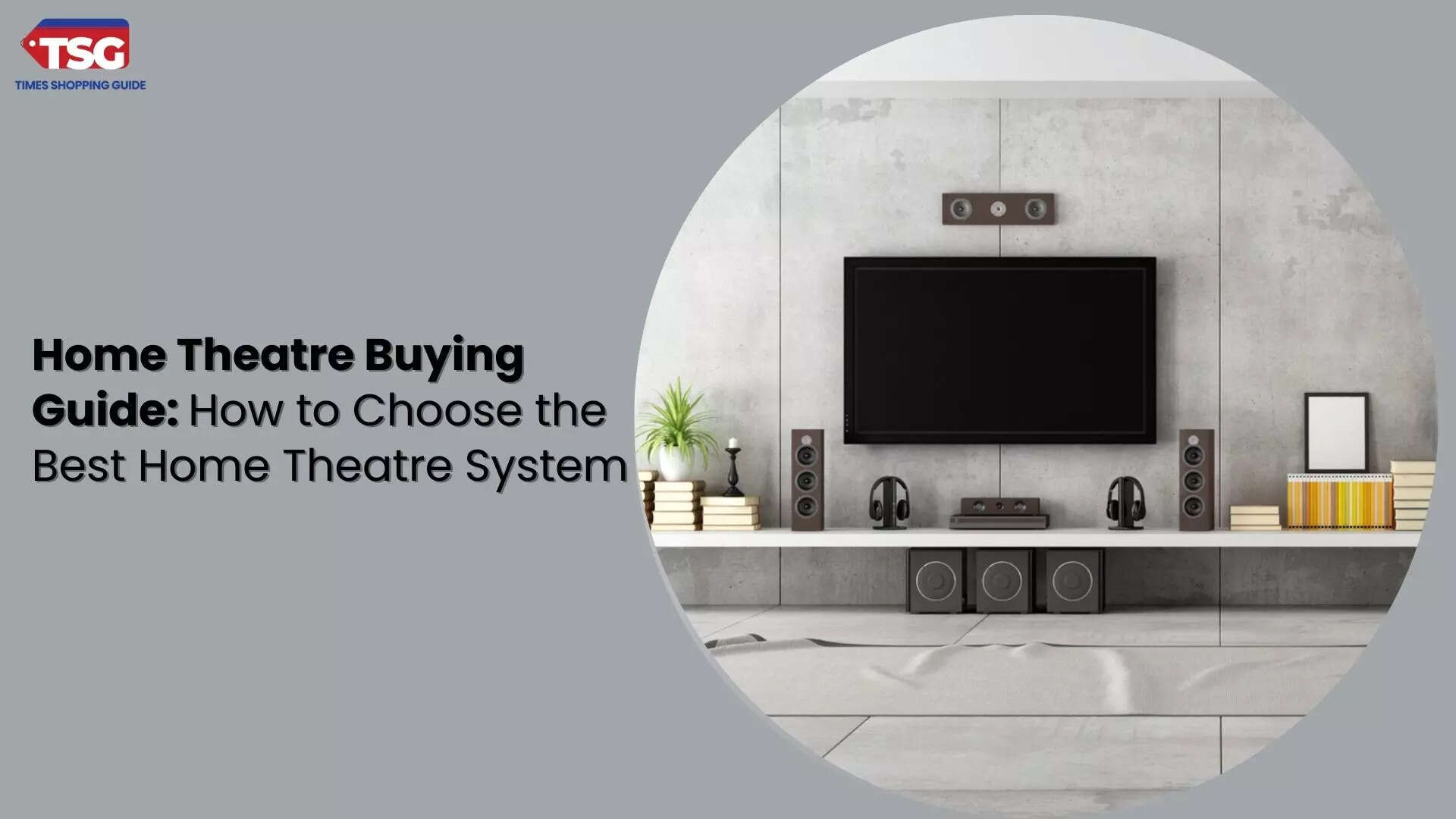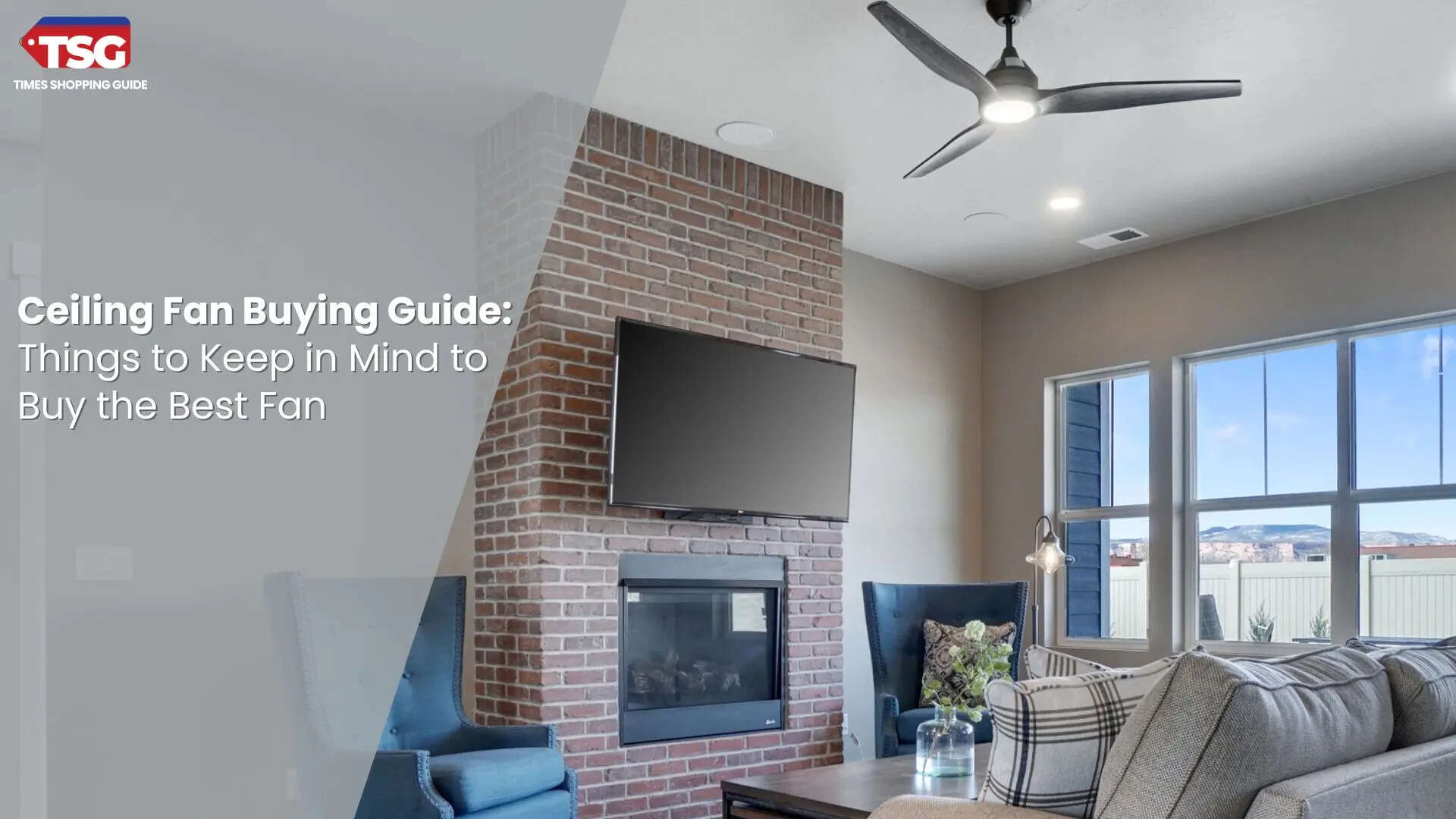- home
- electronics
- buying guides
- home theatre buying guide how to choose the best home theatre system
Home Theatre Buying Guide: How to Choose the Best Home Theatre System
Home Theatre Buying Guide provides essential tips for selecting the ideal home theatre system to enhance your entertainment experience. Key factors to consider include sound quality, speaker configuration, compatibility with existing devices, and room size. It also emphasises the importance of budget, offering options from entry-level to high-end systems. With this guide, you can make informed decisions to create a cinematic atmosphere at home.

Our home theatre buying guide will explain the essential factors and help you select the best system for your needs.
Also Read: Best Party Speakers in 2024 to Light Up Your Diwali Celebration With Beats
Home Theatre Buying Guide: Understanding Your Needs
Purpose of the System
Before diving into specifications and features, determine how you plan to use your home theatre system. Are you primarily watching movies, playing video games, or listening to music? Your intended use will significantly influence your choice of equipment.
Room Size and Layout
The dimensions of your room will dictate the size and power of the components you need. A small room may benefit from a compact soundbar or a 5.1 surround system, while larger spaces can accommodate more powerful setups. Additionally, consider the layout: will you be sitting directly in front of the screen, or is the seating area positioned off to the side?
Home Theatre Buying Guide: Types of Home Theatre Systems
Soundbars
Soundbars are popular for those seeking a space-saving solution without sacrificing sound quality. They typically offer an easy setup and can significantly enhance your TV's audio. Some soundbars have subwoofers for added bass, while others support surround sound formats like Dolby Atmos.
Read This: Best Dolby Atmos Soundbars to Upgrade Your Home Entertainment
5.1 and 7.1 Surround Sound Systems
Traditional surround sound systems are hard to beat for an immersive experience. A 5.1 system includes five speakers (two front, one centre, two surround) and one subwoofer, while a 7.1 system adds two rear speakers for enhanced sound immersion. These setups require more space and installation effort but can deliver exceptional audio quality.
Home Theatre in a Box (HTIB)
HTIB systems come pre-packaged with all the necessary components, including a receiver, speakers, and sometimes even a Blu-ray player. They offer a convenient way to get started, although they may provide a different level of quality than individually selected components.
Custom Systems
For audiophiles or those wanting complete control over their setup, custom systems allow you to choose each component based on your preferences. This option typically offers the best sound quality but requires more knowledge and effort to assemble.
Read More: 6 Best Waterproof Portable Bluetooth Speakers to Enjoy Listening
Home Theatre Buying Guide: Key Components of a Home Theatre System
Receiver
The receiver acts as the brain of your home theatre system, managing audio and video sources. Look for a receiver that supports the latest surround sound formats (like Dolby Atmos and DTS:X), has enough HDMI inputs for your devices, and is compatible with 4K and HDR content.
Home Theatre Buying Guide: Speakers
Front Speakers
The front left, centre, and right speakers deliver clear dialogue and dynamic sound. Look for speakers with a good frequency response to ensure a balanced sound across all audio ranges.
Also This: Best Alexa-Enabled Speakers for Your Smart Home
Surround Speakers
Surround speakers create an immersive experience by filling in the sound from the sides and behind. Bookshelf speakers can work well in smaller spaces while floor-standing speakers are better suited for larger rooms.
Subwoofer
A quality subwoofer is essential for deep bass and overall impact in movies and music. Consider whether you prefer a powered subwoofer (which has its amplifier) or a passive one (which requires a separate amplifier).
Looking for the Best Sound Bars to Start Your Entertainment Adventure? Check this.
Display
While sound is crucial, visuals are just as important. Choose between LED, OLED, and QLED displays based on your preferences for brightness, color accuracy, and viewing angles. Consider the size of the screen relative to your room and seating distance for optimal viewing.
Cables and Accessories
Don’t overlook the importance of quality cables. HDMI cables should be high-speed to support 4K and HDR content, while speaker cables should match the gauge recommended for your system. Consider investing in surge protectors and cable management solutions for a neat setup.
Home Theatre Buying Guide: Essential Features to Look For
4K and HDR Support
For the best visual quality, ensure your system supports 4K resolution and High Dynamic Range (HDR). Look for receivers and displays with HDMI 2.0 or later to handle these formats effectively.
Read More: 5 Best Soundbars Under Rs 10,000 for Exceptional Audio on a Budget
Streaming Capabilities
With the rise of streaming services, having built-in apps or connecting to services like Netflix, Hulu, or Amazon Prime Video can enhance your home theatre experience. Many modern receivers come with streaming capabilities, allowing you to enjoy content without additional devices.
Multi-Room Audio
Consider a system with multi-room audio capabilities if you want audio throughout your home. This feature lets you play different content in different rooms or synchronise audio across spaces.
Voice Control and Smart Features
Many modern home theatre systems are compatible with voice assistants like Amazon Alexa or Google Assistant. This integration allows hands-free control, making adjusting settings, changing inputs, or controlling playback easy.
Click here to explore Best Bluetooth Speakers: Bringing The Vibe to Every Home Party.
Home Theatre Buying Guide: Budget Considerations
Setting a Budget
Home theatre systems can range from a few hundred to several thousand dollars. Determine your budget before shopping to narrow your options and avoid overspending. Consider the components you need and prioritise quality over quantity.
Value vs. Cost
While going for the cheapest option is tempting, investing in quality components can save you money in the long run. Consider brands known for their durability and sound quality, even if they come at a higher price point.
Home Theatre Buying Guide: Installation Tips
DIY vs. Professional Installation
Decide whether you want to install the system yourself or hire a professional. While many systems come with easy-to-follow instructions, a professional installation can ensure optimal performance and save you time.
Also This: Best Soundbars Under 15,000 in 2024 to Upgrade Your Home Theater
Speaker Placement
Proper speaker placement is key to achieving the best sound quality. When seated, front speakers should be at ear level, while surround speakers should be slightly above ear level. Experiment with placement to find the sweet spot for your room.
Calibration
Once installed, calibrate your system. Many receivers have automatic calibration tools, but you can manually adjust settings for more personalised sound.
Home Theatre Buying Guide: Maintenance and Upgrades
Regular Maintenance
To keep your home theatre system performing at its best, regularly clean your equipment, check cables for wear, and ensure proper device ventilation. Dust and clutter can affect sound and performance, so maintain a tidy environment.
Upgrading Components
As technology evolves, you should upgrade the components of your system. Consider starting with the receiver or speakers, as these can significantly impact sound quality.
FAQs
1. What are 2.1 and 5.1 in home theatre?
With a 2.1 system, one speaker is usually placed on either side of the display. 5.1 surround sound, meanwhile, uses five speakers placed around the room to create an immersive sound experience.
2. How many watts is a home theatre best?
Ideally, look for an A/V receiver that delivers at least 100 watts of power to every channel for optimum performance. Impedance is another term used to specify the performance of speakers and the amplifier.
3. How to choose the best sound system for home?
To choose the best sound system for your home, consider your room size, intended use (movies, music, gaming), and budget. Look for quality speakers, a compatible receiver, and features like surround sound and streaming capabilities. Test sound quality in-store and prioritise systems that fit your lifestyle.
Disclaimer: Times Shopping Guide is committed to bringing you the latest products from the best brands. Our selection is based on market research and positive consumer feedback. Times Shopping Guide is also a part of an affiliate partnership. In line with this, we may receive a portion of the revenue from your purchases. Please note that the product prices are subject to change based on the retailer's deals.












